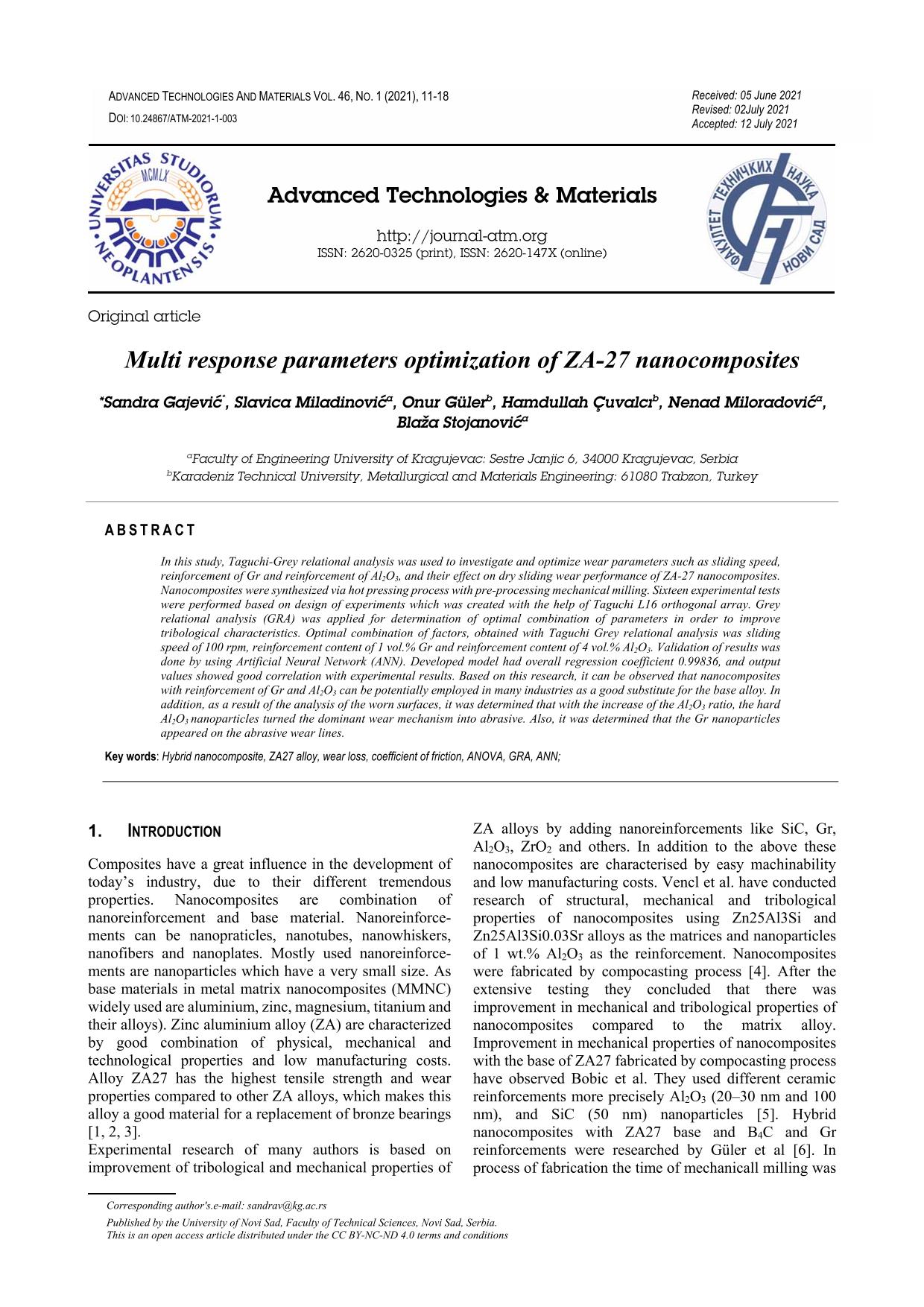
Published 2021-06-01
abstract views: 16 // Full text article (PDF): 12
Keywords
- Hybrid nanocomposite,
- ZA27 alloy,
- wear loss,
- coefficient of friction,
- ANOVA
- GRA,
- ANN ...More
How to Cite

This work is licensed under a Creative Commons Attribution 4.0 International License.
Abstract
In this study, Taguchi-Grey relational analysis was used to investigate and optimize wear parameters such as sliding speed, reinforcement of Gr and reinforcement of Al2O3, and their effect on dry sliding wear performance of ZA-27 nanocomposites. Nanocomposites were synthesized via hot pressing process with pre-processing mechanical milling. Sixteen experimental tests were performed based on design of experiments which was created with the help of Taguchi L16 orthogonal array. Grey relational analysis (GRA) was applied for determination of optimal combination of parameters in order to improve tribological characteristics. Optimal combination of factors, obtained with Taguchi Grey relational analysis was sliding speed of 100 rpm, reinforcement content of 1 vol.% Gr and reinforcement content of 4 vol.% Al2O3. Validation of results was done by using Artificial Neural Network (ANN). Developed model had overall regression coefficient 0.99836, and output values showed good correlation with experimental results. Based on this research, it can be observed that nanocomposites with reinforcement of Gr and Al2O3 can be potentially employed in many industries as a good substitute for the base alloy. In addition, as a result of the analysis of the worn surfaces, it was determined that with the increase of the Al2O3 ratio, the hard Al2O3 nanoparticles turned the dominant wear mechanism into abrasive. Also, it was determined that the Gr nanoparticles appeared on the abrasive wear lines.

